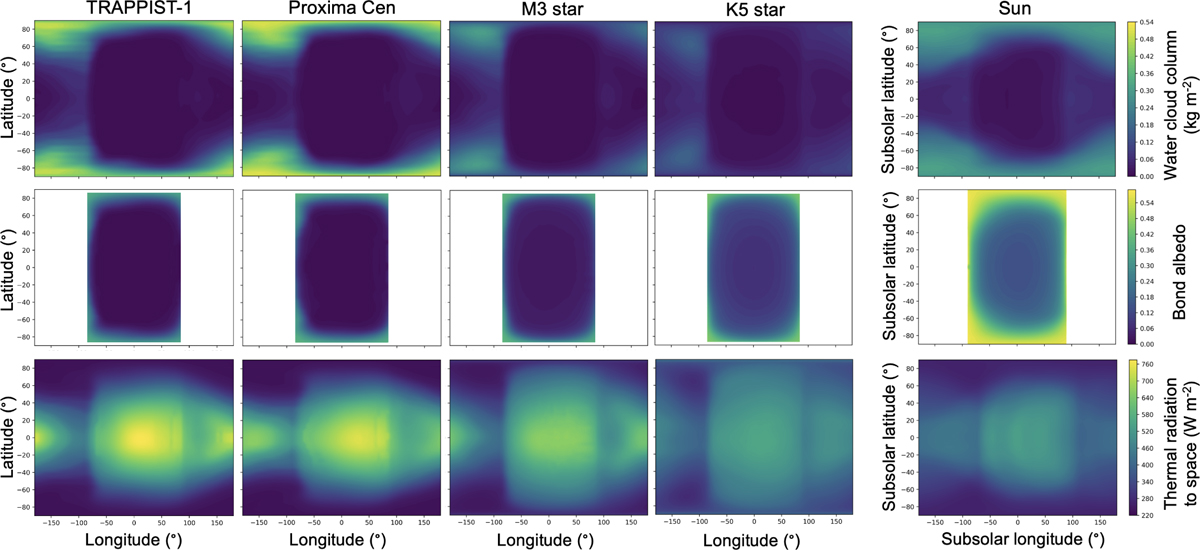Fig. 4

Download original image
Water cloud column (top), albedo (middle), and thermal emission to space (bottom) horizontal maps, for an initially hot and steamy 1 R⊕ planet (with a 10 bar H2O + 1 bar N2 atmosphere) orbiting around different types of stars: TRAPPIST-1 (T★ ~ 2600 K), Proxima Centauri (T★ ~ 3050 K), an M3 star (T★ ~ 3400 K), a K5 star (T★ ~ 4400 K), and the Sun (T★ ~ 5780 K). The associated simulations names are T1-1, Pcen-1, M3-1, K5-1, and SUN-1, respectively. The simulations shown here were forced to an ISR of 500 W m−2 (i.e., 1.47 F⊕), and the outputs were averaged over 100 Earth days. A synchronous rotation for all the simulations was assumed, except for those of the Sun. In this case the results were taken directly from Turbet et al. (2021): rotation period of 1 Earth day, orbital period of 365 Earth days, and obliquity of 23.5°. For this simulation only, the maps were calculated in the heliocentric frame (i.e., keeping the subsolar point at 0° longitude and 0° latitude), and using an average of five Earth years as in Turbet et al. (2021).
Current usage metrics show cumulative count of Article Views (full-text article views including HTML views, PDF and ePub downloads, according to the available data) and Abstracts Views on Vision4Press platform.
Data correspond to usage on the plateform after 2015. The current usage metrics is available 48-96 hours after online publication and is updated daily on week days.
Initial download of the metrics may take a while.


